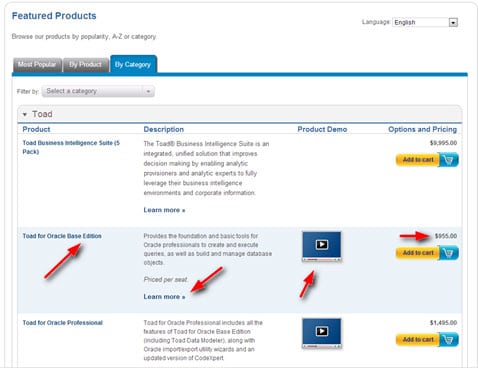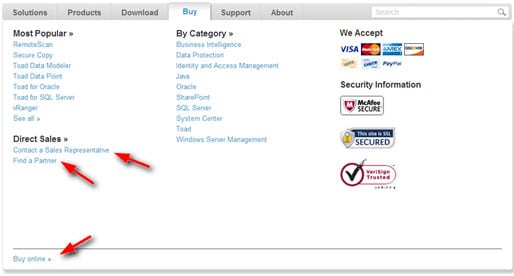According to the Forrester B2B Ecommerce Playbook, total annual U.S. B2B ecommerce sales will reach $559 billion by the end of 2013, bringing the transactional volume of B2B ecommerce to more than twice the size of B2C ecommerce.
With all that money pouring into a growing market, B2B software companies must ensure a convenient sales process that reflects their customers’ shopping preferences. Businesses must plan for conflict between different sales channels and customers’ expectations of the shopping experience.
B2B sales channels
With the growth of ecommerce, the responsibility of direct-selling shifted from sales reps to online stores. This transition resulted in lower costs and better customer experiences. For example, websites and e-stores allowed business buyers to easily research products on their own and even shop at odd hours (which is especially important in a global marketplace where vendor and buyers may reside in different hemispheres).
However, direct B2B purchases online can be risky. The products themselves are often complicated to install and use and require lots of support and maintenance. If customers buy straight from a website, they may end up with a piece of software that doesn’t suit their needs.
B2B products are also very expensive. Buyers may be adverse to submitting payment for large orders online without first talking to a sales rep and clarifying concerns. That’s why it’s important to make sure your key accounts (the frequent buyers with expensive orders) have access to sales reps and self-service portals when necessary.
Another key to selling B2B software is channel partnerships with affiliates and resellers. These are win-win relationships where vendors gain access to new customers and channel partners profit without having to develop and maintain the product they sell. Channel partners are especially important in the SaaS market, as cloud MSPs evolve into a crucial advisory role.
For pure-click B2B companies, it should be obvious that your ecommerce venture must provide customers access to an online shopping cart, sales reps and channel partners.

While it’s important to lead customers through their preferred channels, that process is not always clean and simple. What happens when customers spend time interacting with sales reps or channel partners only to purchase via an e-store? Make sure you have technology in place to analyze the complex buying path of B2B customers and attribute sales correctly. Without correct attribution, B2B companies put their channel partnerships at risk.
B2B shopping experience
Every buyer of enterprise software is also an individual who buys retail online. Shopping in marketplaces like Amazon and eBay have taught them to expect convenient sign-ins and hassle free purchasing. As a result, B2B companies must provide their customers with a B2C-like online shopping experience. The first piece of this puzzle is to offer an e-store so that customers can purchase software directly from your site. But there’s more to B2B online shopping than just building an e-store. A world class B2B shopping experience includes:
Site navigation
Self-service elements like product categories and onsite search are necessary components of B2B ecommerce. As opposed to B2C companies who sell a small amount of products, B2B companies sell dozens if not hundreds of products through their sites. If you want visitors to find the products they are looking for, make sure they are sorted into relevant categories with prominent calls to navigation. Onsite search is another important part. By ensuring relevant search results, you make it easier to lead B2B customers toward conversion.
Product pages
Your product pages should be another step closer to converting your visitor. The primary purpose of your product page is to educate visitors about your products without burdening them with too much information. B2B software companies like Quest do a great job with their product pages. They include not just product names, prices and descriptions that link to landing pages unique to each product, but even videos that demonstrate product functionality.

Account registrations
Account registrations are beneficial because, they collect customer information into a useful data base and simplify the repurchasing process in the future. The problem is that many companies make the process of creating a customer account inconvenient. Let your customers complete their orders and create their account based on the information they submitted during the order process. You can include all the account information in their confirmation page.
Purchase orders
Many organizations don’t let an employee use a company credit card carte blanche to purchase expensive software products. They often require purchase orders be sent to vendors. Yet, I’m often surprised to see B2B carts that do not feature purchase orders as a payment method. The key here is not to inconvenience your customers by limiting their payment options to credit cards.
The necessity of convenience
IT is an enormous part of business expenditure. B2B digital ecommerce, whether software or SaaS, is poised for success as long as companies offer customer convenient shopping experiences.
In summary, offer your business customers their preferred sales channels – whether in the form of a sales rep, channel partner or e-store. For direct online sales, make sure that the shopping experience matches customer expectations of convenience and service.
Craig Vodnik is the co-founder and vice president of operations at cleverbridge. You can connect with Vodnik on Twitter, LinkedIn and Google+.